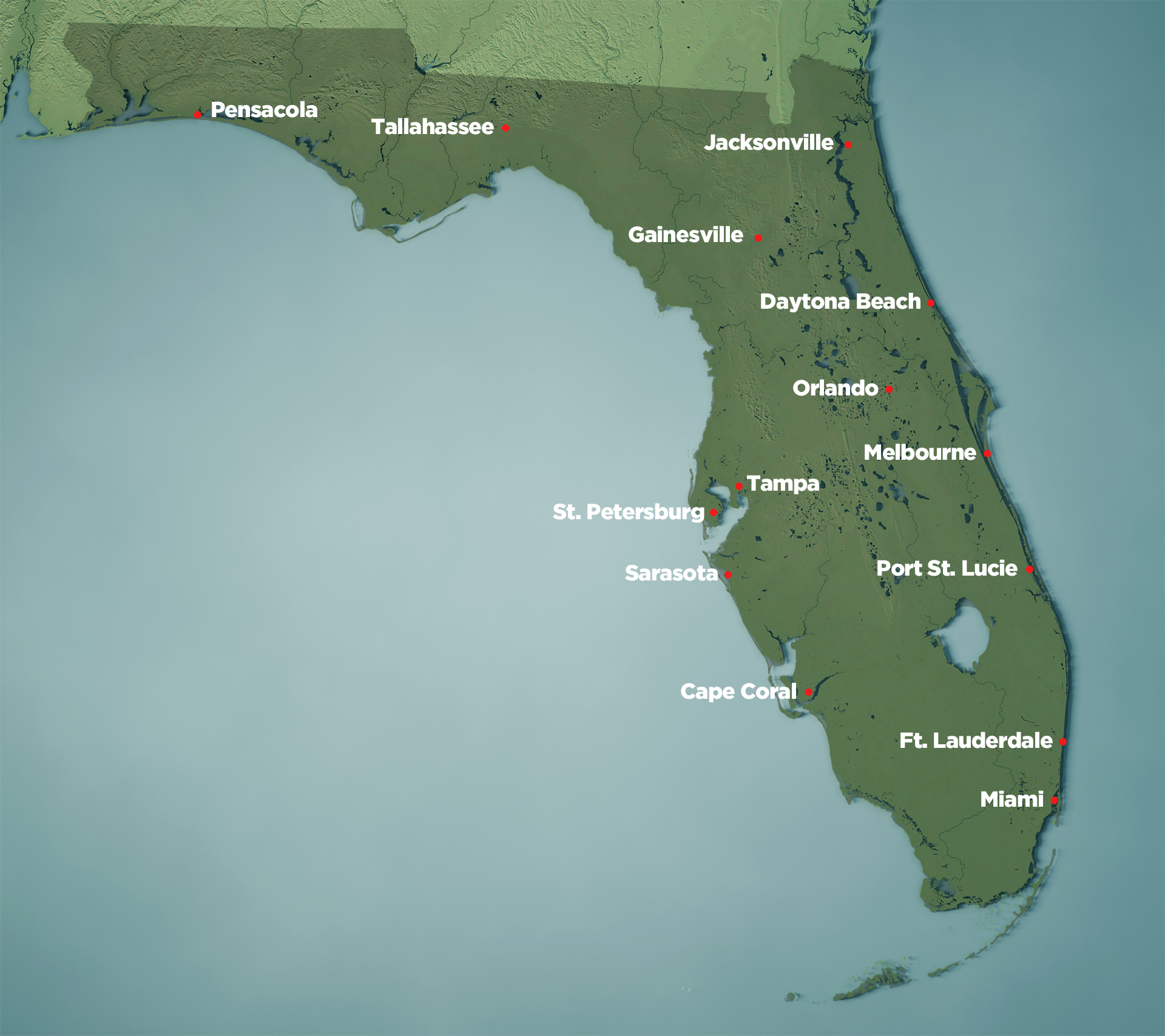Ever wonder why 99% of the homes in south Florida are made with some kind of concrete construction-usually concrete block? Well it’s because of the south Florida building codes. After hurricane Andrew in 1992, residents, code officials, engineers and designers all realized that the building codes for Florida and particularly south Florida needed to be beefed-up in order to ensure that homes and apartments would be safer, stronger and able to stand up against powerful hurricanes that would most probably hit Florida in the future.
Because of those beefed-up building requirements, it became less and less practical to use wood-frame construction and more practical to use concrete block. Concrete block’s heavier weight and it ability to retain its strength up against even the strongest winds have proven it’s the product of choice in Florida.
As our climate and weather conditions change due to warming of the oceans the strength and shear number of powerful hurricanes affecting our state have and will continue to grow. That’s why concrete block is growing in popularity all over the state-not just on the coastal areas but throughout the central regions of Florida.
Our Stormtracker radar gives you all the information you need to see where the next storm or hurricane is and when it will possibly affect you. It’s easy to use and you can customize it for your own needs whether its to plan your next beach trip or this weekends golf game. You can set it up on your phone so you can have it with you wherever you go. Try it out.
Here in Florida, having a home that can stand up to all that nature throws at it, is critical. Concrete block has proven itself over time to be the one building material that doesn’t burn, melt, rot or blow away. Concrete block construction puts eight inches of pure strength between you and the elements. It can withstand winds up to 250 miles per hour and provide extra security during hurricanes, tornadoes and even earthquakes.
Save as much as 30% on homeowner’s insurance with concrete block construction.
When you own a home in Florida your three biggest fixed expenses are the loan itself, taxes and insurance. Homeowners insurance premiums in Florida have continued to increase every year and that probably isn’t going to change. Depending on where you live in Florida and your particular insurance company, you can realize as much as 30% savings every year in premium costs. All just because you have a concrete block home.
How to use this Estimator:
Hovering over any area of this map of Florida will reveal wind zones.
Clicking on a selected wind zone will reveal average insurance premiums for the selected zone, as well as average percentage cost increases.

Up to 99
Miles Per Hour
Average Insurance Premium
$2,651
Percentage Cost Increase
+ 0%
100 - 109
Miles Per Hour
Average Insurance Premium
$2,931
Percentage Cost Increase
+ 10.5%
110 - 119
Miles Per Hour
Average Insurance Premium
$3,542
Percentage Cost Increase
+ 25.2%
120 - 129
Miles Per Hour
Average Insurance Premium
$3,637
Percentage Cost Increase
+ 37.2%
120 - 129
Miles Per Hour
Average Insurance Premium
$3,637
Percentage Cost Increase
+ 37.2%
130 - 139
Miles Per Hour
Average Insurance Premium
$4,140
Percentage Cost Increase
+ 56.7%
140 - 149
Miles Per Hour
Average Insurance Premium
$5,002
Percentage Cost Increase
+ 88.7%
140 - 149
Miles Per Hour
Average Insurance Premium
$5,002
Percentage Cost Increase
+ 88.7%
140 - 149
Miles Per Hour
Average Insurance Premium
$5,002
Percentage Cost Increase
+ 88.7%
150 and Up
Miles Per Hour
Average Insurance Premium
$5,423
Percentage Cost Increase
+ 104%